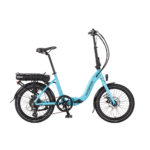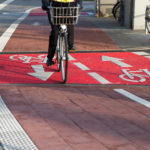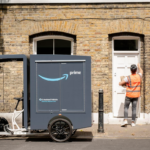First of all,
Hi everybody, this is my first post.
I've been lurking around this forum for quite a while and reading other threads. There is alot of helpful information posted by people here.
I decided to go for a Bafang (8fun) qswxh motor and an aluminium alloy 12aH, 36v battery. And i got it from BMSbattery.
The S&H was damn expensive (1/3 of total price) but i got it in 8-9 days.
The thing is that they forgot to send the set of keys to the battery! and now they have their chinese new year holiday or whatever it is.
I dont actually need them right now as i dont ride the bike during the winter (living in Norway) but i need them. I had to open up the battery and solder a cable to the back of the ignition thing . (to complete the circuit). And the battery outputs 39.9V.
Had some troubles setting up the cables from the ESC to the motor but finally i managed to get the motor running.
I intend to make this ebike Eu-legal, and i have a pedal sensor (but currently not connected as i'm just testing/messing around with the kit)
I have some questions though...
#1 Can i charge the battery as normal with the circuit i've made?
#2 I dont really understand those "Phase" cables. I have phase a, phase b, phase c... currently i have all of those connected and the motor runs... Should i use just 1 phase?
#3 Follow up question to the previous one, the 5 "motor hall sensor wires", should all of them be connected? (Red :5V; Black:GND; Yellow:Hall phase A;Green:Hall phase B;Blue&White: hall phase C)
I'll try to post some photos if anyone is interested.
Thanks
Hi everybody, this is my first post.
I've been lurking around this forum for quite a while and reading other threads. There is alot of helpful information posted by people here.
I decided to go for a Bafang (8fun) qswxh motor and an aluminium alloy 12aH, 36v battery. And i got it from BMSbattery.
The S&H was damn expensive (1/3 of total price) but i got it in 8-9 days.
The thing is that they forgot to send the set of keys to the battery! and now they have their chinese new year holiday or whatever it is.
I dont actually need them right now as i dont ride the bike during the winter (living in Norway) but i need them. I had to open up the battery and solder a cable to the back of the ignition thing . (to complete the circuit). And the battery outputs 39.9V.
Had some troubles setting up the cables from the ESC to the motor but finally i managed to get the motor running.
I intend to make this ebike Eu-legal, and i have a pedal sensor (but currently not connected as i'm just testing/messing around with the kit)
I have some questions though...
#1 Can i charge the battery as normal with the circuit i've made?
#2 I dont really understand those "Phase" cables. I have phase a, phase b, phase c... currently i have all of those connected and the motor runs... Should i use just 1 phase?
#3 Follow up question to the previous one, the 5 "motor hall sensor wires", should all of them be connected? (Red :5V; Black:GND; Yellow:Hall phase A;Green:Hall phase B;Blue&White: hall phase C)
I'll try to post some photos if anyone is interested.
Thanks







